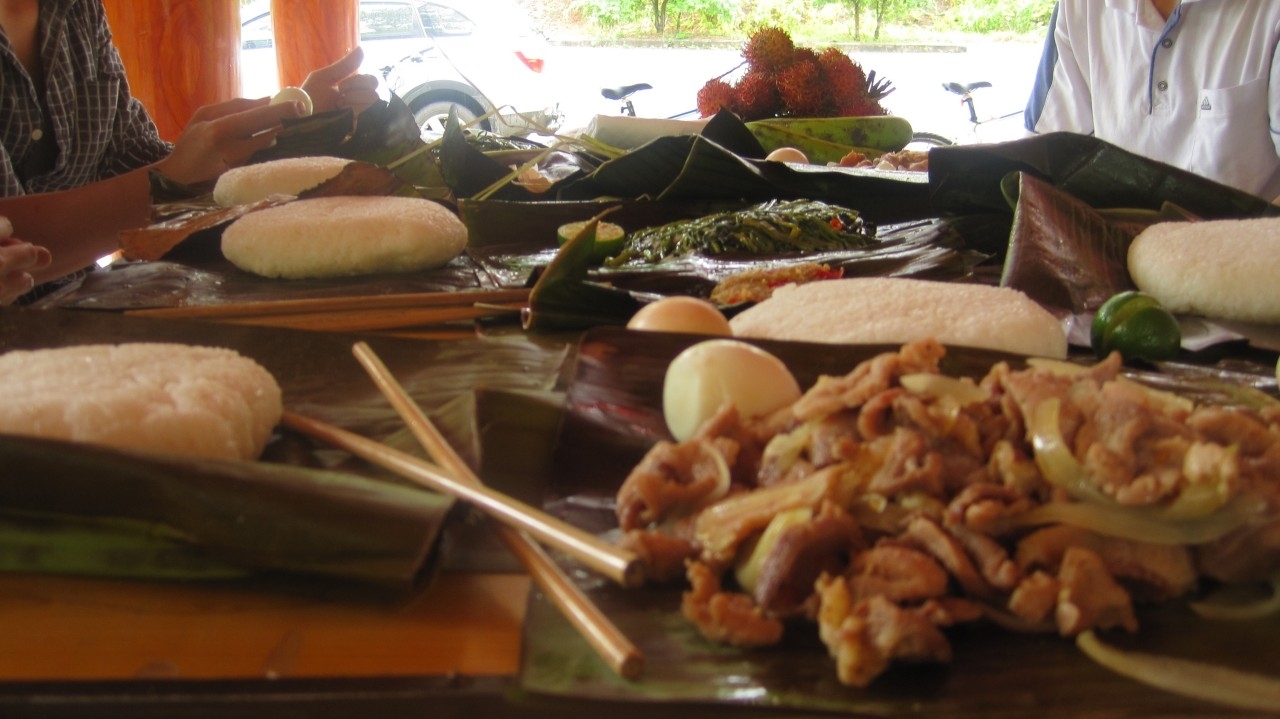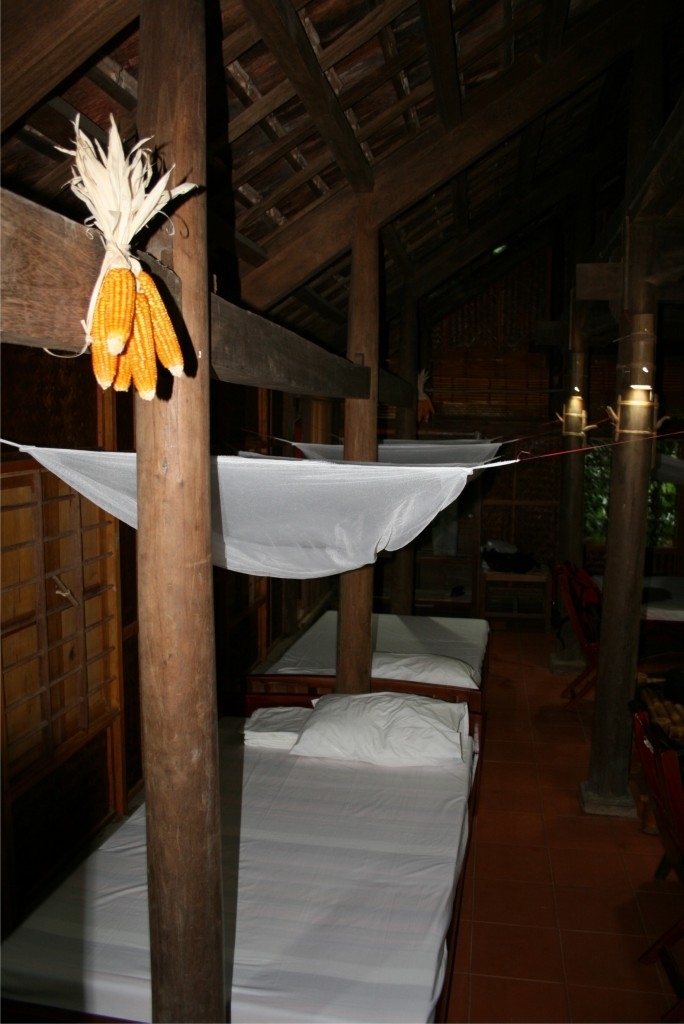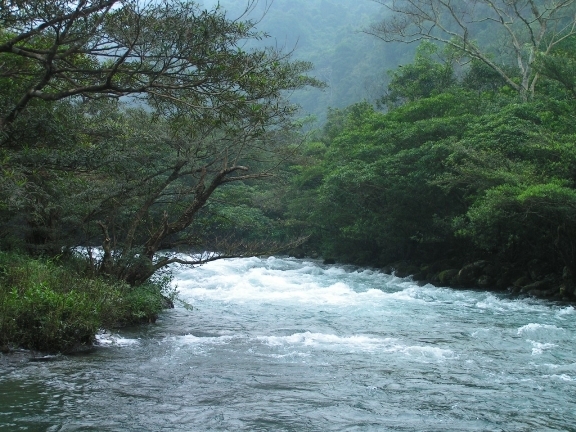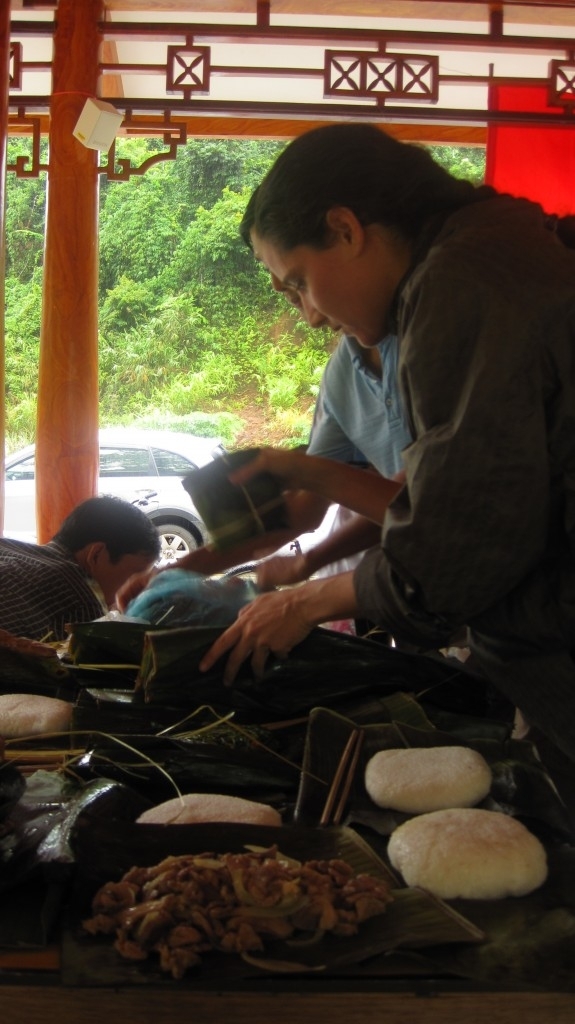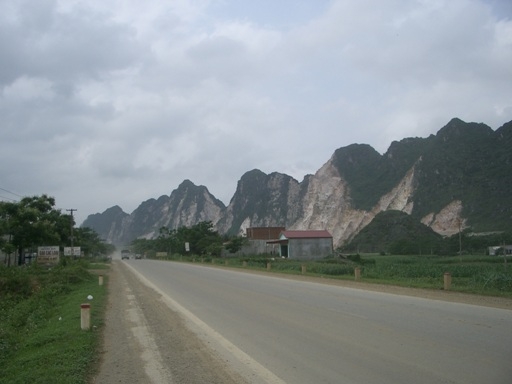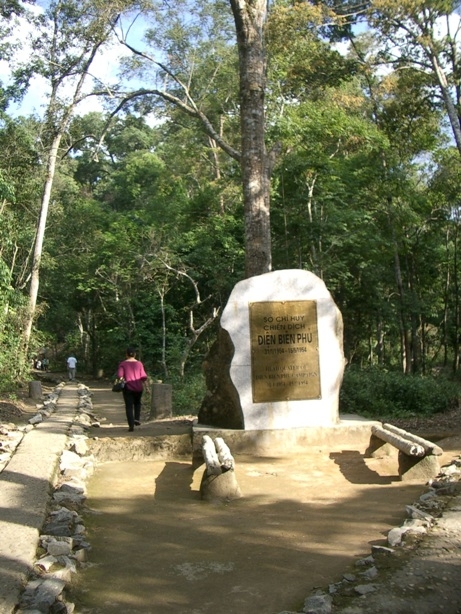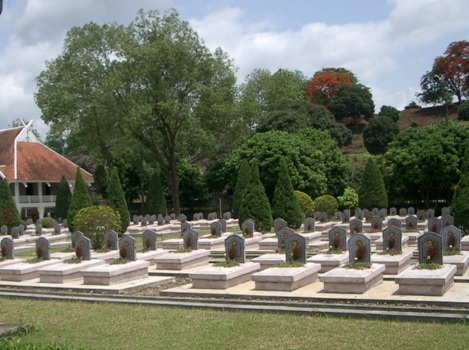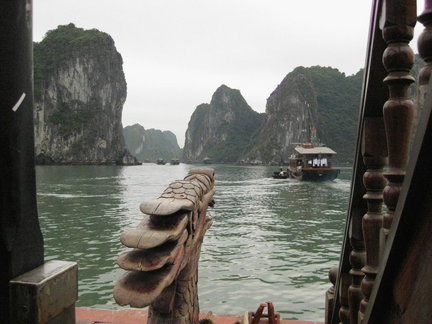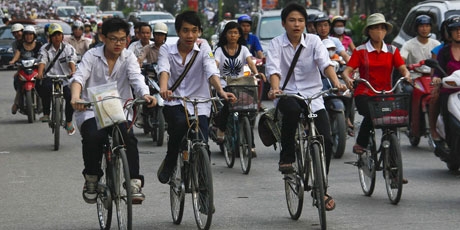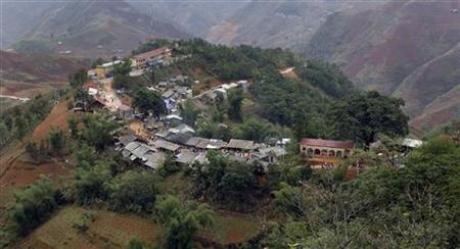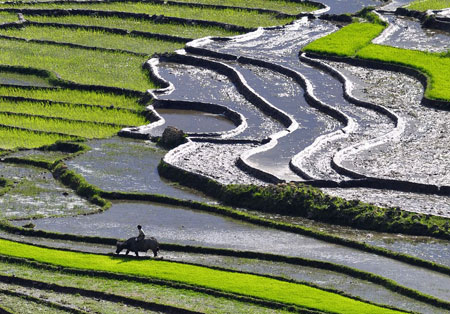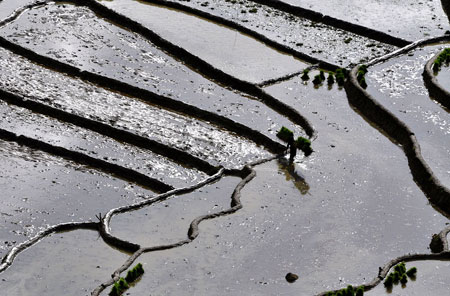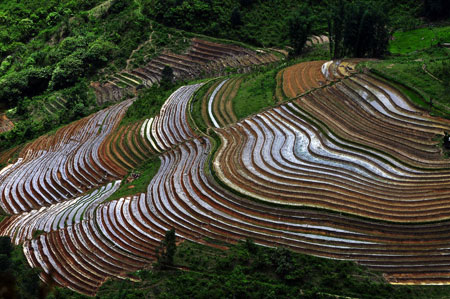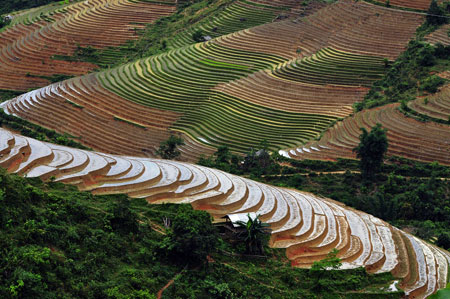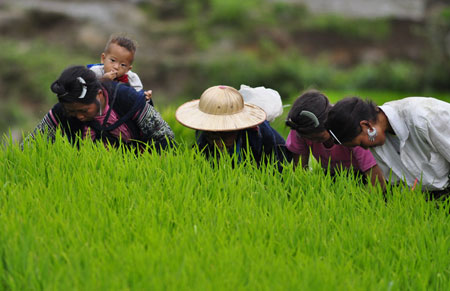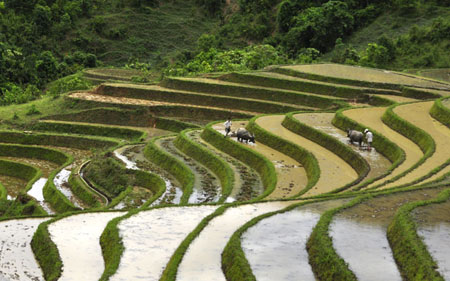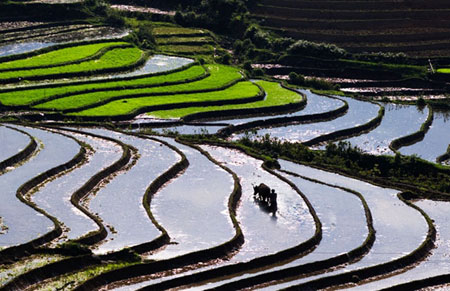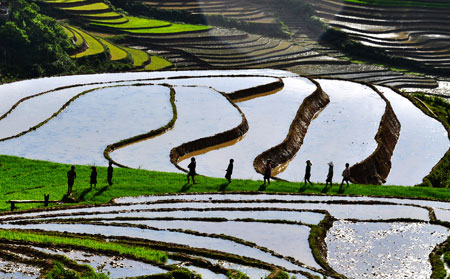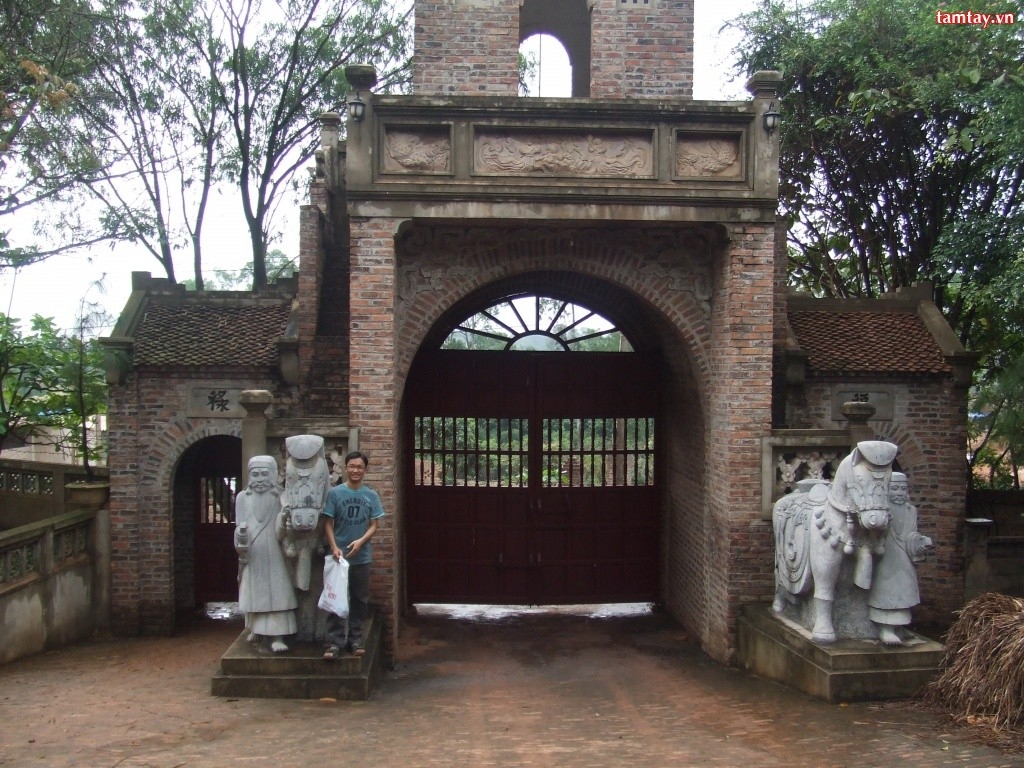 |
| A newly built gate in Phu Thanh Chuong follows traditional design |
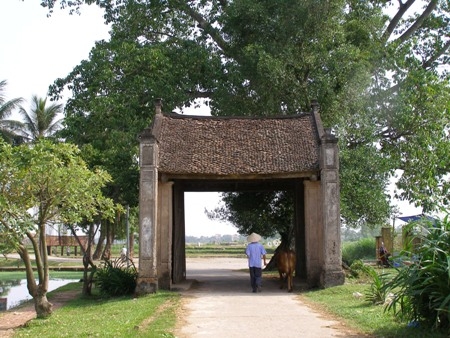 |
| An old gate leading to famous ancient Duong Lam Village Son Tay Town, Hanoi |
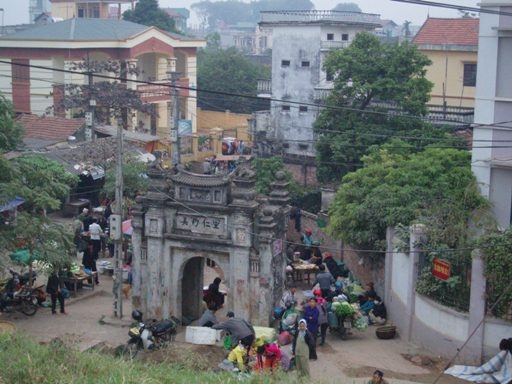 |
| Modern life around an ancient gate |
Village gates are found mostly in the cities and provinces lying along the Red River Delta region such as Bac Ninh, Hanoi, Nam Dinh, and Thai Binh. Before 1945, almost all villages in this region were surrounded by a bamboo hedge which separated their houses from the farm. The gate was a clear marker of this division.
At that time, a village was a closed community. In the morning, when the gate was open, villagers went out to markets, took buffalos to their farm. And when they all got home in the evening, the gate was closed. Security was thus kept for villagers.
A typical Vietnamese village must have two gates: a front gate and a back gate. The front gate was built southeastwards. Southeast is towards the rising sun and is considered a good direction. The front gate is for living people, for welcoming good things and distinguished guests. The back gate faced west, where the sun sets and is considered an infelicitous direction. That’s why the back gate opens to the village’s cemetery and was also the exit to drive away bad people and criminals.
Normally, village gates were built simply, and were the combination of the Chinese pagoda and temple architecture. They usually have one big door but some villages had two smaller doors flanking the main big door. Some gates were built with a big tiled roof and had a second floor for the village watchman.
Together with the special architecture, each village was decorated with some Chinese scripts or two parallel sentences. They all demonstrate the village customs and traditions or were the admonition to all villagers. For example, the script on the gate of Cao Lam Village in Hanoi reads: “Xuat mon huu cong”, translated as “anyone who leaves this gate must gain success”. This sentence has become an inspiration for many villagers and many have become successful in their career. Villagers in Ha Tri Village in Ha Dong District, Hanoi, focus on keeping and developing their good manners and customs, inspired by the sentence: “My tuc kha gia” carved on the village gate. Or in Te Qua Village, Hanoi, villagers dream of a favourable weather through four words “Phong Van bao ho”.
In the past, when Vietnamese villagers still lived in cottages with just a simple bamboo wattle for a gate, the big brick village gates were their pride. They played an important part in the life of the people here. The gates were the places for information exchange, for villagers to find more about the outside world and for strangers to learn about the village. It is also the place to welcome returning villagers, new brides and distinguished guests.
My village once also had a big gate but then it was demolished twenty years ago to make way for a big road. Many people, especially elderly people, regret its demolition.
“I will never forget the moment when they destroyed the gate,” my grandfather said with a sigh. “It seemed I’d lost my closest friend”. The gate had been there since he was born and he had lived in this village his whole life, so it is easy to understand his feelings.
This situation is also happening to many villages during the process of urbanisation. In many villages, people are trying to protect and upgrade the gates, recognising them as their precious heritage. “This is our duty,” confirmed Vu Duy Du, head of the board for preserving ancient buildings in Nam Doai Village in Ha Nam Province. “Our ancestors had built them, we must protect them as a way to respect our ancestors and educate our children”.
Hopefully, many old village gates will still live with us long into the future and our children can also have chance to admire these special cultural relics.

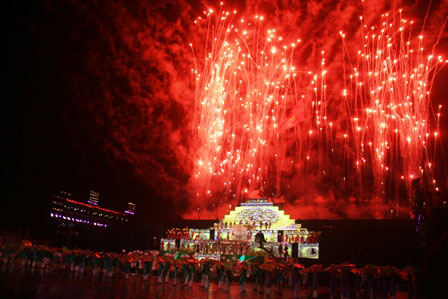
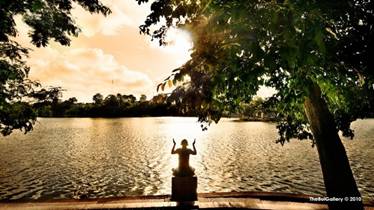
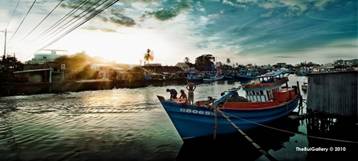
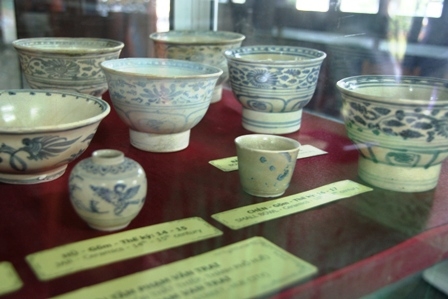

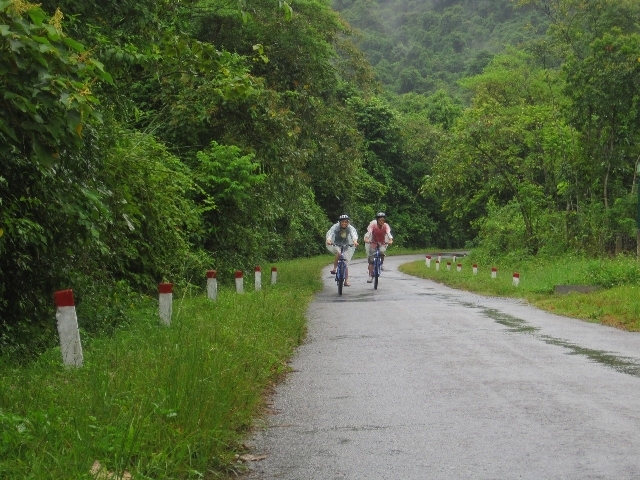 Some might define the perfect getaway from the city as a country retreat on the doorstep of a celebrated national park, with mountain biking, forest trekking, or kayaking along majestic rivers all as feasable options. So far, Chay Lap Village in Bo Trach District, Quang Binh Province fits the bill, but we are in Vietnam, so what better way to top it off with than some cultural authenticity?
Some might define the perfect getaway from the city as a country retreat on the doorstep of a celebrated national park, with mountain biking, forest trekking, or kayaking along majestic rivers all as feasable options. So far, Chay Lap Village in Bo Trach District, Quang Binh Province fits the bill, but we are in Vietnam, so what better way to top it off with than some cultural authenticity?